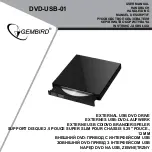
3
4. Installation
Make sure of even supporting surface, of solid foot or flange
mounting and of exact alignment in case of direct coupling.
Avoid resonances in operating speed range and with the
sixfold (or, in case of single-phase supply, the double) mains
frequency which may be caused by the assembly. In case of
machines
≤
100 kW, turn rotor by hand, listen for abnormal
slipping noises. Check direction of rotation in uncoupled
state (follow Section 5.) Mount or remove output elements
(pulley, coupling) only using appropriate means (heat!) and
cover them with a touch guard. Avoid excessive belt tensions
(catalogue, technical list).
The balance is indicated on the shaft end face or on the
rating plate (H = half, F = full key). When mounting the output
element, take care of balance!
For models with shaft ends pointing downward, a canopy is
recommended; for models with shaft ends pointing upward,
measures are needed to protect against ingress of water into
the bearing.
Do not obstruct ventilation. Exhaust air, also from
neighbouring sets, must not be drawn in again directly.
Chemically polluted air or dust-containing cooling air or low-
load operation for a prolonged period of time may negatively
affect the commutation and brush life.
5. Electrical connection and commissioning
All operations may be carried out only by skilled technical
personnel on machines at rest and de-energized and
provided with a safeguard to prevent unintentional reclosing.
This applies also to auxiliary circuits (e.g. anti-condensation
heating). Remove shipping brace before commissioning.
Check safe isolation from supply!
Exceeding of the tolerances according to EN 60034 (VDE
0530), i.e. voltage
±
5%, or an unfavourable form factor
resulting from the type of converter used leads to increased
heating and shortens the life of the machine. Pay attention to
rating plate markings as well as to the connection diagram in
the terminal box.
The connection must be so made that a permanent and
safe electrical connection is ensured (no loose wire ends).
Use correct cable terminals. Establish safe protective
conductor connection.
Maintain clearances between live, uninsulated parts and
between such parts and earth.
No presence of foreign objects, dirt and moisture is admitted
in the terminal box.
Close unused cable entrance holes and the box itself in a
dust- and watertight manner.
For the trial run without output elements, lock key.
For the connection and installation of accessories (e.g.
tacho-generators, pulse generators, brakes, temperature
sensors, air-flow monitors, brush monitors), strictly follow the
corresponding instructions. In case of doubt, consult ma-
chine manufacturer.
For machines with brakes, check satisfactory functioning of
brake before commissioning.
Before commissioning, measure insulation resistance. With
500 V applied, the insulation resistance value measured
should not be lower than 1 M
Ω
. For corrective measures, see
operating instructions.
6. Operation
Operation without excitation (and, by analogy, also the no-
load operation of a series-wound motor) can lead to
dangerous overspeeds and must be prevented by
interlocking.
4. Aufstellung
Auf gleichmäßige Auflage, gute Fuß- bzw. Flanschbe-
festigung und genaue Ausrichtung bei direkter Kupplung
achten.
Aufbaubedingte Resonanzen im Betriebsdrehzahlbereich
und mit der sechsfachen (bei Einphasenspeisung doppelten)
Netzfrequenz vermeiden.
Läufer bei Maschinen
≤
100 kW von Hand drehen, auf
ungewöhnliche Schleifgeräusche achten. Drehrichtung im
ungekuppelten Zustand kontrollieren (Abschnitt 5
beachten).
Abtriebselemente (Riemenscheibe, Kupplung ...) nur mit
geeigneten Vorrichtungen auf- bzw. abziehen (Erwärmen!)
und mit einem Berührungsschutz abdecken. Unzulässige
Riemenspannungen vermeiden (Katalog, Techn. Liste).
Der Wuchtzustand ist auf dem Wellenspiegel oder Lei-
stungsschild angegeben (H = Halb-, F = Vollkeilwuchtung).
Bei Montage des Abtriebselementes auf Wuchtzustand
achten!
Bei Bauformen mit Wellenende nach unten wird ein
Schutzdach empfohlen, bei Wellenende nach oben sind
Maßnahmen gegen Eindringen von Wasser in das Lager
notwendig.
Belüftung nicht behindern! Abluft- auch benachbarter
Aggregate - darf nicht unmittelbar wieder angesaugt werden.
Chemisch verunreinigte oder staubhaltige Kühlluft sowie
längerer Schwachlastbetrieb können die Kommutierung und
die Bürstenstandzeit negativ beeinflussen.
5. Elektrischer Anschluß und Inbetriebnahme
Alle Arbeiten dürfen nur von qualifiziertem Fachpersonal
an stillstehender Maschine im freigeschalteten und gegen
Wiedereinschalten gesicherten Zustand vorgenommen
werden. Dies gilt auch für Hilfsstromkreise (z. B.
Stillstandsheizung). Vorhandene Transportsicherungen vor
Inbetriebnahme entfernen.
Spannungsfreiheit prüfen!
Überschreiten der Toleranzen nach EN 60034 (VDE 0530),
d. h. Spannung
±
5 % oder ein ungünstiger Formfaktor durch
die Art der Stromrichterspeisung erhöht die Erwärmung und
verringert die Lebensdauer.
Leistungsschildangaben sowie das Anschlußschema im
Anschlußkasten beachten.
Der Anschluß muß so erfolgen, daß eine dauerhaft sichere,
elektrische Verbindung aufrecht erhalten wird (keine
abstehenden Drahtenden); zugeordnete Kabelendstücke
verwenden. Sichere Schutzleiterverbindung herstellen.
Luftabstände zwischen blanken spannungsführenden Teilen
untereinander und gegen Erde sind einzuhalten.
Im Anschlußkasten dürfen sich keine Fremdkörper, Schmutz
sowie Feuchtigkeit befinden. Nicht benötigte
Kabeleinführungsöffnungen und den Kasten selbst staub-
und wasserdicht verschließen.
Für den Probebetrieb ohne Abtriebselemente Paßfeder
sichern.
Für Anschluß und Installation von Zubehör (z. B. Tacho-
generatoren, Impulsgeber, Bremsen, Temperatursensoren,
Luftstromwächter, Bürstenüberwachungsgerät ...) unbedingt
die entsprechenden Informationen beachten, ggf. Anfrage
beim Maschinenhersteller.
Bei Maschinen mit Bremse vor der Inbetriebnahme die
einwandfreie Funktion der Bremse prüfen.
Vor Inbetriebnahme Isolationswiderstand messen. Der
gemessene Isolationswiderstand mit 500 V soll nicht
niedriger als 1 M
Ω
sein. Hinweise zur Abhilfe enthält die
Betriebsanleitung.
6. Betrieb
Der Betrieb ohne Erregung (analog auch der Leerlauf
eines Reihenschlußmotors) kann zu gefährlichen
Überdrehzahlen führen und muß durch Verriegelung
ausgeschlossen werden.
Содержание DMP 112-2L
Страница 1: ...Betriebsanleitung Gleichstrommotoren Operating and maintenance instructions DC machines DMP 112 180 ...
Страница 47: ...45 ...
Страница 50: ......
Страница 51: ......






































